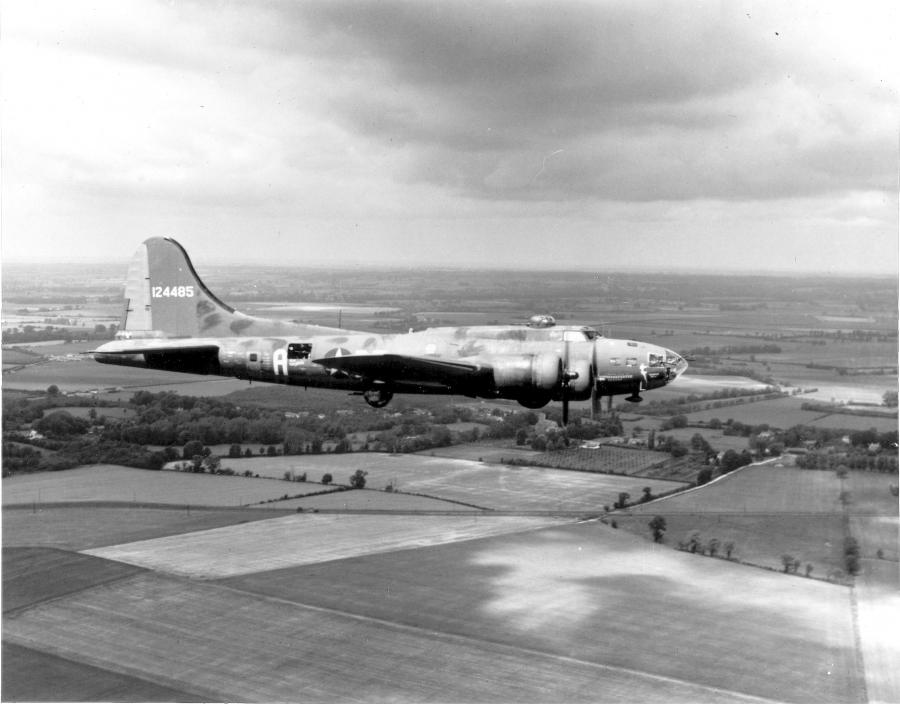B 17 Flying Fortress "Memphis Belle" June 9, 1943
Full Title: The B-17 Flying Fortress "Memphis Belle" flying back to the United States on June 9, 1943 after successfully completing 25 missions against Axis occupied Europe.
During the Second World War The United States Army Air Force (USAAF) built its strategic bombing doctrine on the idea of daytime "precision" bombing. USAAF planners believed the increased accuracy daytime bombing offered could outweigh any risks to the bomber and its crew posed by defending fighters. In order to enhance bomber crew survivability the USAAF turned B-17 and B-24 bombers into airborne battleships. Each bomber crew comprised at least 10 men, in order to wield the heavy defensive firepower as well as perform the primary bomb delivery task. The B-17 four-engine bomber acquired the nickname "flying fortress", with its rugged airframe and 10 heavy machineguns spread around the plane and located: in tandem in turrets on top of the fuselage, in the tail, under the plane, and single machine guns on each side of the bomber's main fuselage. Moreover, the USAAF believed that if the bombers flew in tight formations, in 1943 meaning 54 aircraft flying within a box approximately 2,200 yards wide, 600 yards long and 880 yards deep, the bombers would exponentially increase their available defensive firepower.
There were several problems with this theory. Perhaps foremost was that the bomber's defensive machine gunners had to target small single-engine German interceptors moving at hundreds of miles per hour, while firing from a moving platform in turbulent skies often buffeted even more by flak explosions. Furthermore, the prop wash from the bombers flying in tight formation made the bomber as a gun platform even more unsteady. Consequently, a bomber formation, despite bristling with hundreds of heavy machineguns firing thousands of rounds per minute, remained remarkably vulnerable to the quick moving, hard hitting German fighters. For instance, one USAAF Bomb Group; the 95th from the 4th Bomber Wing, equipped with B-17's, lost half its strength in its first nine missions. Because of such losses by the end of March 1943, the US Eighth Air Force, flying out of England, could not even put the number of bombers into the sky it had ready in January. Thus, when the "Memphis Belle" completed its 25th mission, the 1943 marker for the end of a US bomber crew's combat tour of duty, it actually proved to be a quite fortunate aircraft and crew. Only late in 1943, with the arrival of true long-range escort fighters would casualty rates dip in the ranks of American bomber crewmembers.
Picture Courtesy of the United States Air Force


